The Truth About Botox: Debunking the Myth of Forever Injections
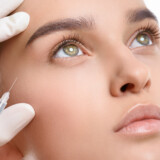
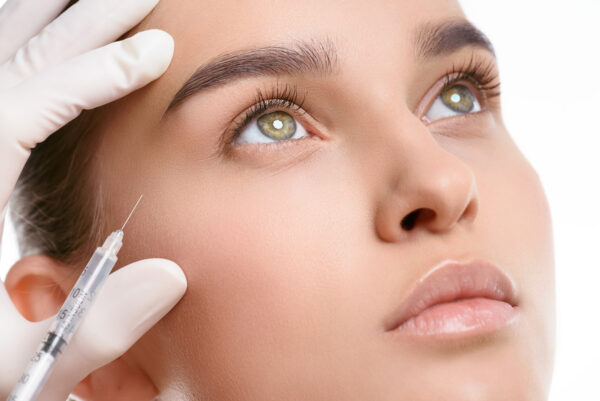
In most cases, the results of Botox last anywhere from three to six months.
Contemplating Botox injections often prompts a pertinent question: Will I need them forever? It’s a valid concern, especially for those venturing into the realm of cosmetic enhancements for the first time. The thought of committing to a treatment regimen indefinitely in terms of time and finances can evoke apprehension. But fear not—let’s demystify the notion of perpetual Botox injections and explore the realities behind this common query.
Understanding How Botox Works
Before delving into the longevity of Botox treatments, it’s essential to grasp how this renowned cosmetic procedure operates. Botox, derived from botulinum toxin, functions by impeding nerve signals to targeted muscles, thereby inhibiting their ability to contract. This muscle relaxation alleviates the appearance of wrinkles caused by repetitive facial movements, yielding a smoother, more youthful complexion.
The Duration of Botox Effects
Typically, the effects of Botox persist for a duration ranging from 3 to 6 months. However, this timeframe is subject to variation depending on things like each person’s metabolism, the treatment area, and the dosage used. As the effects gradually wane, muscle activity resumes, leading to the reappearance of lines and wrinkles.
Maintenance of Botox Results
To sustain optimal results, most individuals find it necessary to schedule Botox injections every 3 to 4 months. Yet, the narrative doesn’t end there. Long-term users often report an extension of the interval between treatments over time—a phenomenon attributed to the cumulative effect of muscle relaxation. The treated muscles weaken with consistent use, necessitating less frequent injections to maintain the desired smoothness. Additionally, Botox can prevent the formation of new wrinkles by mitigating muscle contractions—a practice colloquially referred to as “preventative Botox.”
The Consequences of Discontinuing Botox
Opting to cease Botox injections entails a gradual dissipation of the toxin’s effects, allowing muscle activity to resume naturally. Consequently, lines and wrinkles reemerge as the aging process resumes its course. However, discontinuing Botox does not exacerbate existing wrinkles or hasten the aging process; instead, it permits natural aging to progress from its previous state. Notably, Botox aids in preventing the worsening of wrinkles and inhibits the formation of new ones while undergoing treatment.
Long-Term Benefits of Botox
Scientific research and clinical experience affirm the safety and efficacy of Botox over extended periods of time. In addition to potentially necessitating less frequent treatments, prolonged Botox use may confer a preventative effect against the development of new wrinkles in treated areas, courtesy of reduced muscle activity.
The Freedom to Choose
For those contemplating the cessation of Botox treatments, rest assured that discontinuation poses no adverse consequences. While muscle activity resumes post-treatment cessation, the severity of lines and wrinkles is unlikely to surpass pre-treatment levels. In fact, the skin may fare better than if left untreated, owing to Botox’s preventative properties.
Embracing the Benefits of Botox
Given its widespread use, Botox unquestionably has outstanding anti-aging benefits. However, the notion of committing to lifelong injections need not induce anxiety. You retain the autonomy to discontinue treatments anytime without enduring long-term repercussions on your skin. Whether you’re contemplating Botox or seeking guidance on maintaining results, consult with our experts to address your queries and embark on your aesthetic journey with confidence.
When considering Botox treatment, selecting a provider with a proven track record of expertise and excellence in cosmetic procedures is paramount. Skilled healthcare professionals possess the knowledge and experience to safely and effectively administer Botox injections. Prior to undergoing treatment, it’s crucial to conduct thorough research on potential providers, read reviews, and schedule consultations to discuss your goals and expectations in depth.
Dentox offers an extensive training program designed to educate healthcare providers on the optimal procedures and techniques for administering Botox injections. Explore their comprehensive online and in-person training options at https://dentox.com/all-courses/botox-training/ and https://dentox.com/live-courses/ to empower healthcare professionals to improve patient outcomes and satisfaction. Dentox places utmost importance on patient safety, treatment efficacy, and holistic care, ensuring that patients receive the highest quality Botox treatments.
Deciphering the Relationship Between Microneedling and Botox: Clarifying the Facts
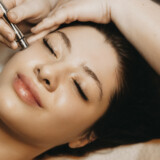

Microneedling should be done a week before Botox injections or two weeks afterward.
In the ever-expanding realm of skincare innovations, microneedling and Botox have emerged as stalwarts, each renowned for their ability to rejuvenate skin and enhance appearance. However, amidst the popularity of these treatments, a pertinent question arises: Does microneedling impact the effectiveness of Botox injections? To address this query, a deeper exploration of existing research and expert opinions is essential.
Microneedling: Understanding the Basics
It’s essential to understand the basics of microneedling before exploring the possible interaction between microneedling and Botox. In order to create controlled micro-injuries on the skin’s surface, a device with fine needles is used in this minimally invasive treatment. These tiny wounds trigger the skin’s innate healing process, which results in the synthesis of collagen and elastin, two proteins that are vital for preserving the firmness and elasticity of the skin.
Microneedling’s versatility in addressing various dermatological concerns, such as acne scars, fine lines, wrinkles, and hyperpigmentation, has solidified its status as a sought-after collagen induction therapy. Its ability to enhance skin texture and tone renders it a valuable tool for individuals seeking to rejuvenate their complexion.
The Microneedling-Botox Dilemma: Analyzing the Evidence
In recent years, speculation has arisen regarding the potential impact of microneedling on the efficacy of Botox injections. While anecdotal reports and isolated studies have fueled this discourse, a definitive consensus remains elusive within the scientific community.
One study suggested a potential decrease in Botox effectiveness when combined with microneedling, prompting concerns among skincare practitioners. However, caution is warranted when interpreting these findings, as the study’s limitations—including sample size and methodology—may not fully capture the intricacies of this relationship.
Despite these preliminary insights, it’s crucial to acknowledge the gaps in existing research and refrain from premature conclusions. The scientific literature on this subject lacks robust, well-designed studies that comprehensively evaluate the impact of microneedling on Botox efficacy, underscoring the need for further investigation to elucidate this complex interplay.
Guiding the Interaction: Expert Recommendations
Given the inconclusive nature of current research, skincare experts advocate for a prudent and strategic approach when combining microneedling with Botox. Careful consideration of treatment timing is paramount to optimize outcomes and minimize potential risks.
Based on expert consensus, scheduling microneedling sessions at least one week before Botox injections or waiting a minimum of two weeks after Botox administration is recommended. This temporal separation aims to maximize efficacy and safety, reducing the risk of unintended interactions between the two modalities.
Individuals can safely enjoy the advantages of microneedling and Botox if they follow the suggested schedule. In addition, it is crucial to build a personalized treatment plan that aligns with individual needs and goals by consulting with an experienced skincare practitioner.
Concluding Remarks: Navigating the Complexity
In the dynamic landscape of skincare advancements, the convergence of microneedling and Botox offers a promising avenue for achieving youthful, radiant skin. While uncertainties persist regarding their compatibility, a nuanced understanding of available evidence and expert guidance can inform informed decision-making.
As research continues to shed light on this intricate relationship, individuals are encouraged to approach the integration of microneedling and Botox with discernment and caution. By collaborating with trusted skincare professionals and staying informed, individuals can embark on a journey towards skin rejuvenation with confidence and clarity.
When contemplating Botox treatment, choosing a provider with a proven history of expertise and excellence in cosmetic procedures is imperative. Skilled healthcare professionals possess the knowledge and experience to safely and effectively administer Botox injections. Before undergoing treatment, it’s essential to research potential providers, peruse reviews, and schedule consultations to discuss your objectives and expectations thoroughly.
Dentox offers an extensive training program to educate healthcare providers on optimal procedures and techniques for administering Botox injections. Explore their online and in-person training options at https://dentox.com/all-courses/botox-training/ and https://dentox.com/live-courses/ to empower healthcare professionals in enhancing patient outcomes and satisfaction. Dentox prioritizes patient safety, treatment efficacy, and comprehensive care, ensuring patients receive the highest quality Botox treatments.
An In-Depth Reference for Optimal Botox Injection Safety and Results

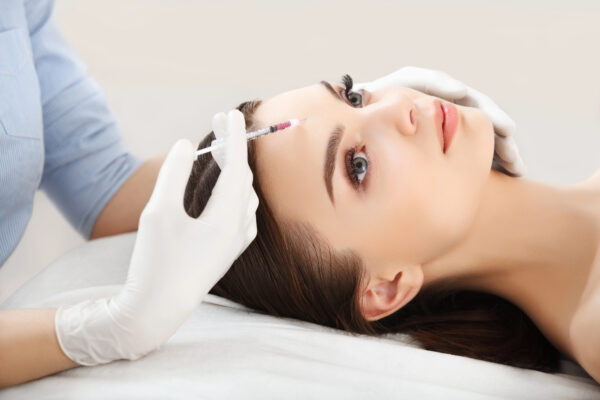
The use of Botox injections to smooth out wrinkles and creases on the face has become more popular in recent years.
Botox injections have grown in popularity in recent years as a means for people to lessen the appearance of facial wrinkles and creases. Cosmetic procedures utilizing Botox have a long history of safe and effective use. The bacterium Clostridium botulinum is responsible for producing the neurotoxic protein known as botulinum toxin, which is the substance’s source. The ability of Botox injections to provide noticeable results with minimal invasiveness and recovery time has led to their immense popularity.
How Botox Works
The action of Botox is to inhibit the transmission of nerve signals to the muscles, thus stopping the muscles from contracting. This movement causes the muscles to relax and the wrinkles to become less noticeable, resulting in the skin’s smoother appearance. Crow’s feet, forehead wrinkles, and frown lines between the eyebrows are some of the most popular regions treated with injections. The method is relatively quick and uncomplicated. Patients often experience signs of recovery anywhere from a few days to a week following treatment, and the effects of the treatment typically last for several months.
Benefits of Botox Injections
One of the primary advantages of Botox injections is their non-invasive nature, allowing patients to resume their daily activities immediately after the procedure. Unlike surgical options, Botox does not require lengthy recovery periods or leave visible scars, making it an attractive choice for those seeking a more youthful appearance without undergoing surgery. Additionally, Botox offers subtle yet effective results, enabling individuals to achieve natural-looking enhancements to their facial aesthetics.
Safety Considerations
Although Botox is generally considered a safe therapy when given by trained experts, it is vital to be cautious and only have skilled practitioners do the treatment. Muscle weakening, drooping eyelids, and uneven facial expressions are some of the adverse reactions that can result from Botox injections that are not delivered correctly. That is why it is so important to talk to a trustworthy professional who can determine if you are a good candidate for therapy and go over the pros and cons with you.
Choosing a Provider
When considering Botox treatment, selecting a provider with a proven track record of expertise and excellence in cosmetic procedures is vital. Qualified healthcare professionals are best equipped to deliver safe and effective Botox injections. Before undergoing treatment, take the time to research potential providers, read reviews, and schedule consultations to discuss your goals and expectations thoroughly.
Dentox provides an extensive training program to educate healthcare providers on the best procedures and techniques to administer Botox injections. Check out https://dentox.com/all-courses/botox-training/ and https://dentox.com/live-courses/ for online and in-person training options to help healthcare professionals enhance patient results and satisfaction. Dentox trains medical professionals to prioritize patient safety, treatment efficacy, and care to ensure their patients receive the best Botox treatments possible.
Conclusion
In conclusion, Botox injections provide a solution that is both convenient and effective in decreasing the appearance of wrinkles and fine lines without the need for individuals to undergo surgical procedures. When used correctly by trained professionals, Botox has the potential to produce effects that look natural, improve facial appearance, and boost confidence.
Expanding Horizons: The Versatile Therapeutic Potential of Botox


Botox has expanded beyond its cosmetic use to become a useful medical agent.
Botox, often associated primarily with its cosmetic application for reducing facial wrinkles, has transcended its original purpose to emerge as a versatile tool within the realm of medicine. While its cosmetic advantages are widely recognized, Botox’s therapeutic utility extends well beyond wrinkle reduction. This article delves into the diverse therapeutic applications of Botox, shedding light on its efficacy, mechanisms of action, and considerations for patients considering alternative treatments.
Understanding Botox
The bacterium Clostridium botulinum, which derives from botulinum toxin type A, is responsible for producing botox. When used at very small doses, Botox can momentarily block the transmission of nerve signals that cause muscles to contract. Both cosmetic and medical applications benefit greatly from this mechanism’s ability to relax muscles.
While Botox has conventionally been renowned for its cosmetic prowess in wrinkle reduction, its scope has broadened to encompass a myriad of medical conditions. Its ability to target specific muscles and nerves makes it particularly effective in managing conditions characterized by muscle spasticity, hyperactivity, or dysfunction.
From Teeth Grinding to Excessive Sweating: Therapeutic Applications of Botox
- Bruxism (Teeth Grinding): Bruxism, the habitual grinding of teeth, is a prevalent condition that can lead to dental issues, jaw discomfort, and headaches. Botox injections into the masseter muscles, responsible for jaw movement, can alleviate muscle tension and diminish grinding. By easing these muscles, Botox not only prevents dental damage but also mitigates associated symptoms like jaw pain and headaches.
- Hyperhidrosis (Excessive Sweating): Excessive sweating, or hyperhidrosis, can significantly impair an individual’s quality of life, causing embarrassment and discomfort. Botox injections in areas prone to sweating, such as the palms, soles of the feet, and underarms, can effectively reduce sweat production. Botox temporarily stops excessive sweating by blocking the nerve signals that normally trigger the glands, giving sufferers back their self-esteem and comfort.
- Migraines: Chronic migraines can be debilitating, profoundly impacting daily functioning and quality of life. Botox has received FDA approval for the prevention of chronic migraines, offering relief to individuals who have not responded to other treatments. Botox relieves migraines by reducing nerve sensitivity and muscular tension in the affected areas, which in turn reduces the frequency and intensity of headaches.
- Muscle Spasms: Muscle spasms, whether stemming from neurological conditions, injuries, or medical interventions, can induce pain, stiffness, and restricted mobility. Botox injections directly into affected muscles can alleviate spasms and their associated symptoms. This targeted approach provides relief for conditions like cerebral palsy, multiple sclerosis, and cervical dystonia, enhancing patients’ overall comfort and mobility.
Considerations for Botox Treatment
While Botox offers myriad therapeutic benefits, several considerations should be taken into account before undergoing treatment:
- Qualified Providers: Only trained and experienced healthcare professionals, such as doctors, nurse practitioners, or dermatologists, should administer Botox injections. Seeking treatment from reputable providers ensures safe and effective outcomes.
- Individualized Treatment Plans: Each patient’s condition is unique, necessitating tailored treatment plans to address their specific needs and objectives. A comprehensive evaluation by a healthcare provider is crucial for determining the optimal dosage, injection sites, and frequency of Botox treatments.
- Although Botox injections are typically well-tolerated by most people, some people experience temporary bruising, swelling, or weakening of the muscles around the injection site as side effects. Patients should discuss these risks with their healthcare provider and promptly report any adverse reactions.
- Long-Term Management: Botox’s effects are transient and typically last for several months, varying depending on the condition being treated. Patients may require regular follow-up appointments to sustain therapeutic benefits and adjust treatment as necessary.
In Conclusion
Botox’s evolution from a cosmetic enhancer to a multifaceted therapeutic agent underscores its remarkable versatility and efficacy in addressing diverse medical conditions. Beyond its renowned benefits in reducing wrinkles, Botox offers relief for conditions such as teeth grinding, excessive sweating, migraines, and muscle spasms, significantly enhancing patients’ quality of life.
As research and clinical experience continue to expand our understanding of Botox’s mechanisms of action and therapeutic applications, it holds promise for even broader uses in the future. With its proven safety profile and tangible benefits for patients, Botox remains an invaluable tool in the medical arsenal, offering hope and relief for individuals grappling with various medical conditions.
Dentox provides comprehensive training for medical and aesthetic professionals on the administration of Botox in various problematic areas. Whether you prefer in-person seminars or online learning, you can enroll at your convenience. To learn more about our live courses and online Botox training, please visit https://dentox.com/live-courses/ for in-person seminars and https://dentox.com/all-courses/botox-training/ for online courses.
Your Essential Med Spa Menu Lists: Five Non-Invasive Treatments

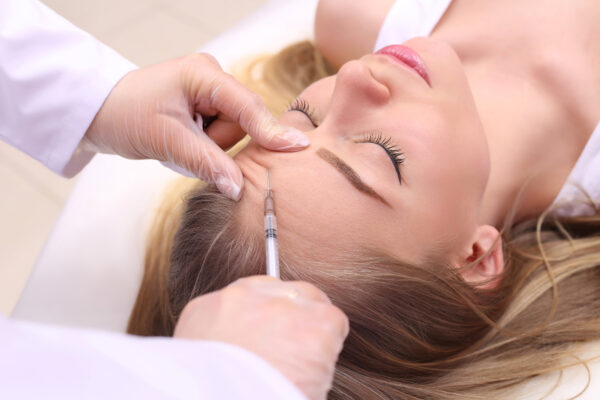
Botox injections reduce fine lines and wrinkles, making them popular in medical spas.
The beauty industry is shifting towards non-invasive cosmetic procedures, driven by technological advancements. Clients prefer treatments with visible results without surgery due to reduced risk, shorter recovery times, and lower costs. Non-invasive procedures are now essential for med spas, meeting the needs of clients seeking enhancements with convenience and rapid recovery. Med spas must adapt their offerings as demand grows to meet changing trends and client expectations.
Here are the top 5 non-invasive treatments that are highly sought after and proven to enhance client satisfaction:
Botox
Medical spas now often offer Botox injections as a popular therapy due to the noticeable improvement in the appearance of fine lines and wrinkles. Botulinum toxin injections temporarily reduce muscle tension, plump the skin, and stop the deepening of wrinkles caused by facial expressions. The treatment is helpful for people with hectic schedules because it is short, typically lasting only 10 to 15 minutes.
Only trained medical professionals are qualified to administer Botox injections safely and effectively. They undergo specialized training, like the Dentox course, to learn the proper techniques. Medical professionals can visit https://dentox.com/live-classes/ for live patient courses and https://dentox.com/all-courses/botox-training/ for online Botox training to stay updated on the latest methods and technology for administering Botox.
Botox injections appeal to a younger audience looking to prevent early signs of aging. Clients can resume their normal activities immediately after the procedure, making it suitable for those with hectic schedules. The effects of Botox last for approximately 3 to 4 months, ensuring clients return for follow-up treatments and fostering loyalty to the medspa.
Dermal Fillers
Dermal fillers address the loss of skin volume and facial contouring desires by filling in wrinkles and creases immediately. These fillers typically contain hyaluronic acid and offer temporary results, appealing to clients who are hesitant about permanent changes. Med spas can customize lip enhancement, cheek augmentation, or nasolabial fold reduction treatments, catering to individual preferences.
Laser Hair Removal
Men and women can benefit from the long-lasting results of laser hair removal. This method gradually reduces hair growth by destroying hair follicles with focused laser beams. Clients are really satisfied and keep coming back to laser hair removal since it works better than shaving or waxing. The long-term success of laser treatments guarantees a healthy return on investment for medical spas, despite the hefty price tag associated with the equipment.
Chemical Peels
Chemical peels improve complexion by exfoliating the skin’s top layers and revealing smoother, more evenly toned skin underneath. Available in various strengths, chemical peels cater to individual skin types and concerns, such as fine lines, acne scars, and hyperpigmentation. Clients appreciate the visible skin tone and texture improvement and the long-term benefits, like improved collagen formation.
Microdermabrasion
Microdermabrasion rejuvenates the skin by gently exfoliating dead skin cells and promoting the growth of new, healthy skin cells. This non-invasive procedure addresses sun damage, scars, and uneven skin texture with minimal side effects and no downtime. Clients can resume their daily activities immediately after treatment, making microdermabrasion a convenient option for skin rejuvenation.
Incorporating these top 5 non-invasive treatments into med spa menus allows them to meet clients’ evolving needs and thrive in a competitive market. Med spas can position themselves as leaders in the cosmetic care industry by providing innovative and results-driven treatments, enhancing clients’ appearance and confidence with personalized solutions.
Botox Q & A: Everything You Need to Know About Botulinum Toxin
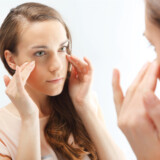

Botox works best on dynamic wrinkles, also known as expression lines.
Botox, derived from the bacterium Clostridium botulinum, is a popular injectable treatment used to smooth fine lines and wrinkles, among other cosmetic and medical purposes. This comprehensive guide will address questions and concerns surrounding Botox, its uses, preparation, and what to expect during and after treatment.
What is Botox?
Neuromodulators, like Botox, are injectable medications that block the signals that cause muscles to move. The injection of Botox temporarily paralyzes the targeted muscles by interfering with these impulses, giving the illusion of smoother and softer skin. This is why Botox is such a great way to keep wrinkles and fine lines at bay. Results can persist for months after injections, which often take no more than a few minutes. The Botox effects eventually disappear as the muscles’ range of motion and flexibility return to normal.
Can Botox treat any wrinkles?
Dynamic wrinkles, often called expression lines, are the best candidates for Botox treatment. These lines appear as a result of constantly expressing the same facial emotions, such as smiling, frowning, or squinting. Lines around the eyes (crow’s feet), the forehead, the glabellar line (the space between the eyebrows), the nose (bunny lines), the lips (marionette lines), and the horizontal bands of the neck are regular places for Botox injections. Botox can smooth out these wrinkles, giving you a younger look.
Are there other uses for Botox?
Beyond cosmetic purposes, Botox has several medical applications due to its ability to target muscle movement. These include:
- Nonsurgical brow lift: Botox can be strategically injected to lift and shape the eyebrows, creating a more youthful and lifted appearance without surgery.
- Nonsurgical lip flip: Injecting Botox into the muscles around the lips can create fuller lips by relaxing the muscles and allowing the upper lip to roll outward gently.
- Masseter muscle (jaw muscle) slimming: Botox injections into the masseter muscles can help reduce the size of the jaw muscles, resulting in a slimmer jawline and a softer facial profile.
- Temporomandibular joint (TMJ) pain relief: Botox can alleviate symptoms associated with TMJ disorders, such as jaw pain, tension, and difficulty chewing.
- Migraine relief: Some individuals experience relief from chronic migraines after receiving Botox injections, although the exact mechanism of action is not fully understood.
- Hyperhidrosis (excessive sweating) treatment: Botox injections can help reduce excessive sweating by blocking the signals that stimulate sweat glands, particularly in areas such as the underarms, palms, and soles of the feet.
How should I prepare for Botox treatment?
Most individuals do not need specific steps to prepare for Botox treatment. However, discussing your goals and expectations with your medical professional during the initial consultation is essential. Also, inform your medical professional of your medical history, including any underlying health conditions or medications you take. Avoiding blood-thinning medications or supplements before your appointment can help reduce the risk of bruising at the injection sites. Botox appointments are typically brief, lasting between 15 and 30 minutes, and your medical professional will provide specific post-care instructions based on your individual needs and the number of treatment areas.
What can I expect during and after Botox treatment?
During your Botox appointment, your medical professional will discuss your desired outcomes and map the treatment areas. Most people only experience mild discomfort during the quick and primarily painless injections. The injection sites may be red, swollen, or bruised right after treatment, but these side effects usually go away within a few hours to a few days. Botox usually takes about 7 to 14 days to take full effect, and you will begin to notice a gradual softening of the treated lines and wrinkles. The results of Botox typically last for 3 to 4 months before gradually wearing off, at which point you may choose to schedule follow-up treatments to maintain your desired results.
In conclusion, Botox is a versatile and effective treatment option for both cosmetic and medical purposes. You can make informed decisions about the right choice by understanding how Botox works, its various uses, and what to expect before, during, and after treatment. Always consult a qualified medical practitioner to determine the best treatment plan for your needs and goals.
Expert medical practitioners know all the potential dangers of injecting Botox into various facial muscles and regions. They are responsible for assessing each patient’s needs, administering Botox correctly, and monitoring their reactions to ensure they are safe and effective.
Dentox teaches medical and aesthetic professionals how to administer Botox in problem regions. You can enroll in a seminar at your leisure, either in person at one of several venues across the US or online. Visit https://dentox.com/live-courses/ and https://dentox.com/all-courses/botox-training/ for more details about our live courses and online botox training, respectively.
Botox Frequently Asked Questions: A Guide to A Younger and Smoother Appearance


When administered by a qualified medical expert, Botox is considered to be incredibly safe.
In the realm of cosmetic treatments, few options hold as much sway as Botox injections. Renowned for their ability to turn back the hands of time and bestow a revitalized, more youthful appearance, Botox treatments have garnered global acclaim for their effectiveness. If you’ve ever pondered the prospect of smoothing out wrinkles and rejuvenating your look, Botox could be the solution you’ve been seeking. Let’s delve into the world of Botox and unravel some of the most pressing questions surrounding this transformative procedure.
What Exactly Is Botox, and How Does It Work?
Botox, in essence, is a purified form of botulinum toxin type A. Now, before you let the word “toxin” send shivers down your spine, rest assured that when administered correctly, Botox is entirely safe. Its primary function is to temporarily relax the muscles responsible for “dynamic wrinkles”—those pesky lines that form when we make facial expressions like smiling or frowning. By calming these overactive muscles, Botox smooths out the appearance of wrinkles, particularly on the forehead, between the eyebrows (frown lines), and around the eyes (crow’s feet).
Does getting Botox hurt?
This is a common concern, but fear not! Most people find that Botox injections cause minimal discomfort. The needles used for Botox injections are lovely, so any sensation you might feel is usually very mild. Additionally, your practitioner can apply a numbing cream beforehand to make the experience even more comfortable.
How Long Will My Botox Results Last?
Ah, the million-dollar question! Typically, the effects of Botox last anywhere from 3 to 4 months. However, with regular treatments, you might notice that the results stick around for extended periods. It’s like training your muscles to stay relaxed and your skin to stay smoother for extended periods of time.
Are there any side effects I should be aware of?
Safety first, always! Botox is considered remarkably safe when administered by a qualified professional. As with any medical procedure, there can be some temporary side effects. These may include slight bruising, swelling, or perhaps a mild headache. But worry not. These effects are usually short-lived and subside quickly. Choosing an experienced injector who knows their stuff is essential to minimizing risks.
Am I a good candidate for Botox?
This is a vital question to consider. The best candidates for Botox are generally in good overall health and have realistic expectations about what the treatment can achieve. If you’re bothered by those expression lines—the ones that show up when you smile, frown, or squint—then Botox could be an excellent option for you. However, if you’re dealing with deeper wrinkles or sagging skin, you might benefit more from other treatments. A consultation with a professional at a reputable Med Spa can help you determine the best course of action for your unique needs.

Botox reduces wrinkles on the forehead, frown lines, and crow’s feet by relaxing these overactive muscles.
Welcome to Your Botox Destination: The Med Spa Experience
Now that we’ve covered the basics of Botox let’s talk about where you can embark on this journey to a smoother, more youthful you—the Med Spa. Here’s why the Med Spa experience stands out:
- Experienced Providers: Your safety and satisfaction are paramount at a reputable Med Spa. The skilled injectors here have undergone extensive training and possess the expertise needed to deliver exceptional results with the utmost care. Professional injectors have extensive training and are aware of the unique risks of injecting Botox into different areas of the face and different facial muscle structures. It is their job to determine how much Botox each patient needs, provide the appropriate dosage, and make sure the patient gets the most out of the therapy with the fewest possible adverse effects. Professionals in the medical and cosmetic fields can learn to inject Botox into high-risk areas with the help of Dentox. Seminars are available at various locations around the United States, and you can sign up for one in person, online, or at your convenience. For more information on our live courses and online botox training, please visit https://dentox.com/live-courses/ and https://dentox.com/all-courses/botox-training/, respectively.
- Tailored Approach: No two faces are alike, and neither are their aesthetic goals. Your concerns are heard and understood at a Med Spa, and your treatment plan is customized accordingly. Whether you want to soften a few lines or undergo a complete facial rejuvenation, the approach suits your needs and desires.
- Comprehensive Services: The beauty of a Med Spa lies in its ability to offer myriad aesthetic treatments under one roof. In addition to Botox, you can explore a range of complementary services, such as dermal fillers to plump and volumize or skin rejuvenation treatments to enhance and revitalize your complexion. Combining treatments can amplify your results and help you achieve a more comprehensive transformation.
In Conclusion
If you’re yearning for a smoother, more youthful appearance, Botox could be the answer you’ve been searching for. With its ability to temporarily relax muscles and diminish wrinkles, Botox has earned its reputation as a go-to cosmetic treatment for rejuvenation. Remember to seek a qualified professional, like those at a reputable Med Spa, to ensure a safe and satisfying experience. So why wait? Take the plunge and discover the transformative power of Botox for yourself—a radiant, more youthful you await!
Unlocking the Secrets of the Lip Flip: A Comprehensive Guide to Nonsurgical Lip Enhancement


A lip flip uses BOTOX®’s muscle-relaxant properties to enhance the top lip’s appearance.
In the world of cosmetic procedures, innovations continuously emerge, offering individuals opportunities to refine and redefine their appearances without invasive surgeries. One such innovation that has gained popularity in recent years is the lip flip. With the help of BOTOX® injections, this non-surgical procedure has the potential to subtly alter the upper lip by giving it a fuller and more defined contour. But what exactly is a lip flip, and how does it differ from traditional lip augmentation methods involving dermal fillers? In this comprehensive guide, we delve deep into the intricacies of the lip flip phenomenon, uncovering its procedure, benefits, potential risks, and everything in between.
Exploring the Lip Flip: A Path to Fuller Lips
At its essence, a lip flip constitutes a cosmetic intervention aimed at augmenting the aesthetic appeal of the upper lip through the utilization of the muscle-relaxant attributes of BOTOX®. In stark contrast to conventional lip augmentation methodologies reliant on the introduction of dermal fillers to augment lip volume, a lip flip concentrates on refining the configuration and topography of the upper lip while minimally impacting its dimensions. The procedure involves carefully injecting very small amounts of BOTOX® into the perioral musculature that surrounds the upper lip. This creates a subtle forward curve that makes the lips look fuller. This modality is notably advantageous for individuals contending with cosmetic concerns such as a hyperactive upper lip, insufficient lip demarcation, or facial asymmetry.
Understanding the Lip Flip Process: Steps, Expectations, and Outcomes
Commencing a lip-flip voyage entails a thoroughgoing process, commencing with an initial consultation with a certified medical practitioner. Throughout this inaugural encounter, individuals engage in comprehensive discussions concerning their objectives, medical background, and anticipated outcomes, thus establishing the groundwork for a bespoke treatment regimen. On the day of the procedure, the provider cleanses the treatment area before delicately administering the BOTOX® injections. While some may opt for topical anesthetics for added comfort, many find the procedure tolerable without them. Following the injection, individuals can resume their daily activities immediately, with minimal downtime. However, patience is paramount, as the full results of a lip flip may take several days to manifest, gradually unveiling a subtly transformed upper lip.
Deciphering the Nuances: Lip Flip vs. Lip Fillers
Distinguishing between a lip flip and traditional lip fillers is essential for individuals seeking the most suitable enhancement for their lips. Despite their shared goal of improving the lips’ appearance, the two procedures are quite different in the methods and aesthetic outcomes they intend to achieve. In order to improve the shape and contour of the upper lip, a lip flip mainly involves relaxing the muscles around it. But lip fillers, which use hyaluronic acid-based fillers, are all about making your lips look fuller and more defined, both on top and below the wrinkle. Lip fillers accommodate a wider range of tastes and demands than lip flips, which offer a subtler improvement with less recovery time and a more noticeable change in lip size and shape.
Advantages, Disadvantages, and Potential Dangers of the Lip Flip Lifestyle
The numerous advantages of a lip flip make it a tempting choice for those who want to subtly but dramatically improve the look of their lips. A lip flip is a great way to fix common beauty issues like uneven thickness or a lack of definition in the upper lip by making it look fuller and more defined. Plus, because it does not last forever, people can try different lip looks without committing to anything permanent. However, like any cosmetic procedure, a lip flip carries potential risks and considerations, including temporary side effects such as redness, swelling, or asymmetry. Choosing a qualified provider and adhering to post-procedure instructions are crucial steps in mitigating these risks and ensuring optimal outcomes.
Charting Your Lip Flip Journey: Consultation, Procedure, and Beyond
Embarking on a lip-flip journey necessitates thorough preparation and understanding of the process from start to finish. Beginning with a comprehensive consultation, individuals collaborate with their healthcare providers to articulate their goals, assess suitability, and customize a treatment plan tailored to their needs. On the day of the procedure, meticulous attention to detail ensures precise administration of BOTOX® injections, laying the groundwork for a successful outcome. Following the procedure, individuals navigate the post-treatment phase with diligence, adhering to guidelines, monitoring their progress, and scheduling follow-up appointments as needed to maintain their desired lip appearance.
Conclusion: Embracing the Power of the Lip Flip
In the realm of cosmetic enhancements, the lip flip stands as a testament to innovation and versatility, offering individuals a subtle yet transformative approach to lip enhancement. Through the strategic use of BOTOX® injections, this nonsurgical procedure unlocks the potential of the upper lip, bestowing it with a fuller, more defined contour that complements the natural beauty of the face. As individuals embark on their lip-flip journeys, guided by qualified professionals and armed with knowledge, they embrace the power to redefine their lips and enhance their confidence, one smile at a time.
When it comes to instructing patients in the art of efficient and precise Botox injections, Dentox is the go-to method for both medical and aesthetic specialists. Dentox offers a wide range of online learning alternatives and programs to professionals all across the US so they may learn at their own pace. Check out https://dentox.com/all-courses/botox-training for information on our virtual offerings and https://dentox.com/live-courses for details on our live courses. Get in touch with Dentox right away to start your path toward informed and purposeful cosmetic procedures.
Unlocking the Versatility of Neurotoxins: Beyond Wrinkles

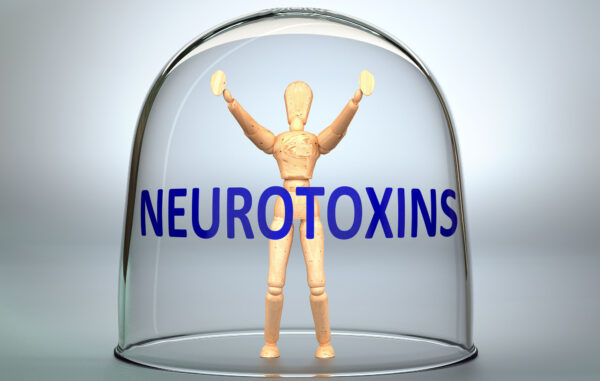
Neurotoxins like Botox have long been used to smooth wrinkles and fine lines, but their potential goes beyond cosmetics.
Neurotoxins like Botox have long been lauded for their ability to soften wrinkles and fine lines, but their potential extends far beyond the realm of cosmetic enhancement. While commonly associated with treatments for the glabella, crow’s feet, and forehead, these potent agents have increasingly found utility in addressing both aesthetic and medical concerns, often in unexpected ways. While some applications may be considered “off-label,” when administered by skilled medical professionals, the use of neurotoxins proves to be safe and effective.
1. ‘Traptox’: Revolutionizing Aesthetics and Comfort
A burgeoning trend making waves across social media platforms like TikTok is the emergence of ‘Traptox.’ This innovative approach targets the trapezius muscle, a crucial yet often overlooked component of our musculoskeletal system. Spanning from the base of the skull to the mid-back and extending towards the shoulders, the trapezius muscle plays a pivotal role in maintaining posture and facilitating various movements of the head, neck, and shoulders.
So why the sudden interest in injecting neurotoxins into this area? The rationale behind ‘Traptox’ encompasses both therapeutic and cosmetic benefits. Firstly, individuals experiencing tension, stiffness, or discomfort in the neck and shoulders, often associated with overworked trapezius muscles, can find relief through neurotoxin injections. By blocking nerve signals, these injections induce muscle relaxation, alleviate pain, and enhance comfort.
Moreover, from an aesthetic standpoint, ‘Traptox’ offers the promise of sculpting the shoulders and creating the illusion of a more elongated neck. By impeding muscle contraction, neurotoxins contribute to muscle atrophy over time, leading to a reduction in size and a more slender appearance. This dual-action approach, addressing both functional discomfort and cosmetic enhancement, underscores the versatility of neurotoxins beyond their conventional applications.
2. Masseter Botox: Reshaping Faces and Relieving Tension
A technique gaining traction in recent years, Masseter Botox, colloquially known as ‘Jaw Botox,’ holds promise not only in reshaping facial contours but also in alleviating symptoms of temporomandibular joint (TMJ) disorder. The masseter muscle, responsible for jaw movement and the chewing process, can undergo hypertrophy, particularly among individuals prone to teeth grinding or clenching due to stress or TMJ issues.
By administering Botox into the masseter muscle, healthcare providers can mitigate muscle contraction, thereby easing tension and gradually reducing its size. Importantly, this intervention does not compromise jaw functionality, as Botox selectively targets the masseter muscle without affecting overall jaw movement. Patients may experience transient soreness or tenderness post-treatment, with optimal outcomes typically manifesting within 2–4 weeks.
For individuals seeking facial slimming, multiple sessions may be necessary to achieve the desired results. Nonetheless, Masseter Botox offers a minimally invasive solution for both cosmetic enhancement and therapeutic relief, underscoring its versatility in addressing multifaceted concerns.
3. Combatting Hyperhidrosis: A Refreshing Solution
Hyperhidrosis, characterized by excessive sweating stemming from overactive sweat glands, can significantly impact one’s quality of life, particularly in areas like the underarms, palms, and feet. While topical antiperspirants provide some relief, individuals with severe hyperhidrosis may require more robust interventions to manage their symptoms effectively.
Neurotoxins are becoming a new option for treating hyperhidrosis because they can help specifically by blocking the nerve signals that tell sweat glands to start working. Contrary to common misconceptions, injecting Botox does not lead to compensatory sweating in other areas of the body, assuring patients of localized efficacy.
The dosage of neurotoxin required varies depending on the treatment area, with some patients necessitating higher quantities to achieve optimal results. Though not permanent, the benefits of neurotoxin injections for hyperhidrosis typically last 4-6 months, providing respite from excessive sweating and restoring confidence in daily activities.
In conclusion, the utilization of neurotoxins transcends conventional boundaries, encompassing a spectrum of applications that extend beyond wrinkle reduction. From addressing musculoskeletal discomfort to refining facial contours and managing medical conditions like hyperhidrosis, the versatility of neurotoxins underscores their invaluable role in modern medicine and aesthetics. With careful administration by skilled professionals, these treatments offer a potent blend of efficacy, safety, and patient satisfaction, paving the way for enhanced well-being and self-assurance.
Dentox is the gold standard for aesthetic and medical professionals alike when it comes to teaching their patients how to inject Botox with precision and efficiency. Dentox gives professionals the freedom to learn at their own speed with a variety of online learning options, and classes spread out across the United States. Learn about our virtual offers at https://dentox.com/all-courses/botox-training and our live courses at https://dentox.com/live-courses. To begin your journey toward educated and meaningful cosmetic practices, contact Dentox now.
Botulinum Toxin: An Avenue of Relief for Temporomandibular Joint (TMJ) Afflictions


Botox injections treat the hyperactive muscles that cause symptoms like jaw clenching and grinding the teeth in the case of TMJ disorder.
A common condition known as temporomandibular joint disorder (TMJ) causes pain, dysfunction, and discomfort in the mandibular joint and surrounding musculature. Its manifestations can profoundly disrupt daily activities such as mastication, phonation, and sleep. Despite the array of treatment modalities available for TMJ, botulinum toxin, commonly known as Botox, has emerged as a promising therapeutic option, offering solace to sufferers. This article scrutinizes the mechanistic insights, efficacy, and merits of Botox injections in assuaging TMJ symptoms.
Comprehending Temporomandibular Joint Disorder (TMJ)
The temporomandibular joint (TMJ) serves as a pivotal hinge linking the mandible to the cranium, facilitating intricate movements, including chewing, speaking, and yawning. TMJ disorder encompasses a gamut of maladies affecting this joint and its contiguous musculature, ligaments, and nerves. Manifestations of TMJ encompass jaw pain or tenderness, impaired mandibular mobility, audible clicking or popping, and rigidity of the facial musculature.
Some of the things that can cause TMJ disorder are traumatic injuries to the mandible, bad teeth alignment, arthritic processes, bruxism, psychological stressors, or a combination of these. The intricate interplay of these factors renders TMJ disorder a complex entity, often necessitating a multidisciplinary therapeutic approach involving dentists, maxillofacial surgeons, physiotherapists, and other allied healthcare professionals.
Botulinum Toxin: Mechanism of Action and Therapeutic Potential
Botulinum toxin, derived from Clostridium botulinum, emerges as a potent neurotoxic protein renowned for its neuromuscular blocking properties. While its ingestion in substantial quantities can culminate in botulism, the therapeutic repertoire of botulinum toxin spans diverse medical disciplines encompassing neurology, ophthalmology, urology, and dermatology.
The mechanism of action of botulinum toxin revolves around its ability to impede the exocytosis of acetylcholine, a neurotransmitter pivotal for neuromuscular transmission, at the presynaptic membrane. By obviating acetylcholine release, botulinum toxin precipitates temporary muscle paralysis or debilitation, engendering muscle relaxation and ameliorating associated symptoms.
In the case of TMJ disorder, Botox injections target the hyperactive musculature, which is indicative of the condition’s hallmarks, such as exacerbated jaw clenching and bruxism. Botox injections are used to treat TMJ symptoms, specifically in muscles like the masseter and temporalis, that can become hypertonic or overactive due to several factors, such as stress and bad teeth grinding.
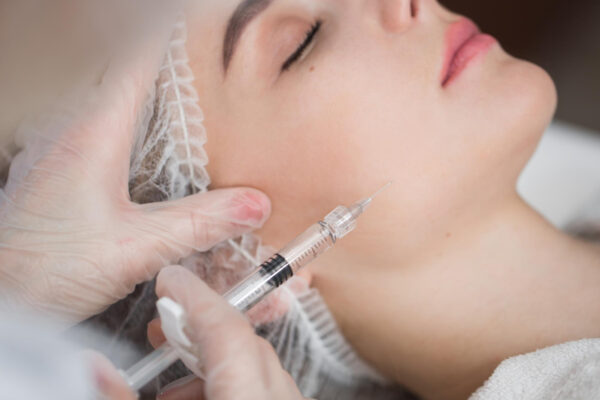
Injections of Botox, when administered by trained medical professionals, have an excellent safety profile.
Efficacy of Botox in Treating TMJ
A plethora of clinical investigations and anecdotal testimonies attest to the efficacy of Botox injections in assuaging TMJ-related distress. Empirical evidence corroborates the ability of Botox to mitigate muscle hyperactivity, alleviate pain, and enhance mandibular functionality among individuals grappling with TMJ disorder.
A systematic review and meta-analysis published in the Journal of Oral Rehabilitation looked at how well Botox injections relieve pain and dysfunction caused by TMJ. After studying, it was found that Botox treatments significantly decreased pain levels, improved mandibular mobility, and made patients happier compared to placebo or standard treatments.
Furthermore, Botox injections boast a commendable safety profile under the stewardship of adept healthcare practitioners. These interventions are typically well-tolerated, engendering minimal proclivity for systemic sequelae. Instances of localized adverse effects, such as transient muscular weakness or ptosis, are sporadic and evanescent in nature.
Benefits of Botox for TMJ Sufferers
There are several benefits to incorporating Botox into the treatment arsenal for TMJ disorder compared to more conventional methods. Firstly, Botox confers targeted and localized therapy, directly addressing the hyperactive musculature implicated in TMJ pathology. Botox does not go through the digestive system like oral drugs, so it has fewer systemic side effects and pharmacokinetic interactions.
Secondly, Botox offers a non-invasive alternative to surgical interventions for TMJ management. In severe or persistent cases of TMJ disorder, surgery like arthrocentesis or joint replacement may be necessary. However, Botox injections can be used instead of surgery, either as an additional treatment or as the main treatment for many patients.
Additionally, Botox injections for TMJ are expedient and facile, typically administered in outpatient settings. The interventions entail the judicious administration of fine-gauge needles, yielding minimal discomfort and convalescence for the recipient. Most individuals can promptly resume their daily activities post-procedure.
Moreover, the effects of Botox interventions for TMJ are transient and reversible, spanning approximately three to six months. This temporal attribute confers versatility in therapeutic planning and dosage titration, contingent upon individual responsiveness and symptomatology. Subsequent administrations can be tailored to sustain therapeutic efficacy over prolonged intervals.
Conclusion
Temporomandibular joint disorder (TMJ) constitutes a formidable challenge for afflicted individuals, encroaching upon their oral functionality, vital activities, and overall welfare. Amidst the panoply of therapeutic options available for TMJ, Botox injections have emerged as a promising therapeutic modality, assuaging the pain and dysfunction associated with the condition.
As part of its mechanism of action, Botox effectively targets the pathophysiological causes of TMJ disorder by reducing muscle hyperactivity. Empirical inquiries uniformly validate the potency of Botox in diminishing pain severity, enhancing mandibular functionality, and amplifying patient contentment.
Additionally, there is a slew of benefits to using Botox injections for TMJ, such as the fact that they are precise, non-invasive, convenient, and reversible. Botox has thus become an integral part of the interdisciplinary treatment plan for TMJ disorder, providing hope and relief to people all over the world.
Dentox serves as an epitome of expertise for professionals traversing both medical and aesthetic domains, furnishing comprehensive education on the precise and proficient administration of Botox injections. Boasting an array of conveniently situated classes spanning the expanse of the United States and flexible online learning avenues, Dentox empowers professionals to advance at their preferred pace. Discover live courses at https://dentox.com/live-courses and virtual offerings at https://dentox.com/all-courses/botox-training. Initiate contact with a certified Botox injector today to commence a voyage towards enlightened and impactful aesthetic practices.





